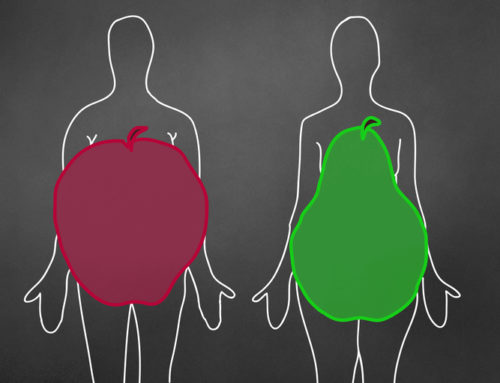If you’re on a journey to optimize your nutrition and achieve your fitness goals, understanding how to calculate macros and your Total Daily Energy Expenditure (TDEE) is essential. Macros, short for macronutrients, consist of protein, carbohydrates, and fats. In this comprehensive guide, we’ll break down the steps to help you calculate your TDEE accurately, set your calorie goals, and determine the right macronutrient ratios for your individual needs.
Perhaps you’ve tried a macro calculator, but you want to ensure the calorie and macro goals are accurate for proper food intake.
Calculating your personalized macros for flexible dieting
In addition to daily calories (kcal), many people wonder how much protein they need and what their overall macronutrient needs per day are. Understanding the fundamentals makes it easier to understand the big picture. Note I emphasize fundamentals, not because they are the simplest but because they are most important.
In the right hand column and below you’ll find key terms and the energy balance equation. If you can grasp this, you are ahead of the game.
In this guide, we will use a sample individual so you can follow along with your data to easily calculate your TDEE, proper deficit or surplus, and macros! Alternatively, there’s a custom macro calculator you can use.
Energy Balance Equation
RMR + EA + NEAT + TEF = TDEE
Total Daily Energy Expenditure (TDEE):
The sum of the components below, i.e. how many calories you burn per day.
Resting Metabolic Rate (RMR):
This is the energy (kcal) used for basic daily life functions at rest. This includes breathing, apoptosis (planned cell death), maintaining a constant body temperature, etc. As endotherms, metabolic heat is used to maintain a constant body temperature. For most people this makes up for 60-75% of TDEE, however in highly active people it can be ≤ 50% of TDEE. A good analogy for RMR is starting your car and leaving it in park. The car isn’t moving, but the engine is burning fuel. Note basal metabolic rate (BMR) is typically within 10% of RMR and is often used interchangeably. It is measured under stricter conditions.
Exercise Activity (EA):
This is you working out at the gym for muscle gain, running, playing sports etc. It’s a planned physical activity.
Non-exercise Activity Thermogenesis (NEAT):
This is all your other activity that is not exercise. This includes standing, walking, fidgeting, housework, etc.
Thermic Effect of Food:
This is the energy cost of digesting and absorbing food. The value varies based on the macronutrient composition of the food(s).
Calories Made Simple
Calories big “C” vs. calories small “c” vs. kilocalories (kcal). Calories big “C” and kilocalories are the same and are what you’ll encounter on nutrition labels. You’ll often see the lower case of calories used interchangeably with kilocalories and big C calories so don’t worry about it. Technically the small “c” calories are used in physics and chemistry. Just think of 1 kilocalorie as one calorie of energy.

Overview for determining TDEE, setting a deficit, and macros.
Step 1: Calculate your current total daily energy expenditure (TDEE) with one of the two methods outlined below.
Step 2: Based on your goal(s) set a sustainable energy deficit (fat loss) or surplus (gain weight, gain muscle, optimize building muscle).
Step 3: Calculate your macros based on the method outlined below. Without having a good estimate of how many calories you burn per day; we can’t set your macros. If you want to skip the math, use the custom macro calculator.
Without further ado, let’s get to it and look at our sample individual. Further below we will review different ways for determining the total number of calories for your specific goal.
| Sample Individual | |
|---|---|
| Age | 37 |
| Gender | Male |
| Height | 5’10” (70″/178 cm) |
| Current weight | 215 lbs. (98 kg) |
| Bodyfat % | 28% |
| Goal bodyweight | 180 lbs. (82 kg) |
| Occupations/Other activity | Desk job/light |
| Exercise activity level | 3-4 hours/wk. |
Method 1: NIH Bodyweight Planner
This is a good online calorie calculator which will also help you set an energy deficit based on your timeline to reach your body composition goals. Using the sample data above, this online calculator produces the results below:
Method 2: Manual Calculation
(RMR/NEAT factor + # of hours of exercise per week) x bodyweight (lbs.).
Using the data from the table above, we go with a RMR/NEAT factor of 10 plus 4 hours of exercise per week.
EX: (10 + 4) x 215 lbs. = 3,010 calories/day
| RMR / NEAT Factor | NEAT Level |
|---|---|
| 9 | Work at a desk job with low activity and sedentary (lots of sitting) outside of work. |
| 10 | Work at a desk job with low activity. Outside of work, activity is infrequent < 5k steps per day. |
| 11-13 | Workday consists of consistent periods of time on your feet and walking. Outside of work, moderate amount of activity, such as housework, walking dog, etc. ~6-10k steps per day. |
| 14-15 | Work consists of physical labor (ex: carpenter) and outside of work activity is high. >10k steps per day. |
Method 3: Custom Calculator
Ok, so maybe you hate math and just want to use a calculator to determine your TDEE. Below is a calculator I created to make it easier for you.
Comparing methods and setting the deficit:
*If your goal is to gain weight, scroll down to the section on gaining weight.
Using method 1, the bodyweight planner gives an aggressive energy deficit (~32%) to reach the goal of 180 lbs. in 6 months. To make the deficit more conservative (and likely sustainable), simply increase the amount of time for your goal.
Using method 2, we need to set an energy deficit. When setting an energy deficit, it’s important to be realistic as well as understanding the tradeoffs. Larger deficits yield faster results. However, this is not necessarily the most effective way as you are likely to lose muscle and it’s harder to sustain.
Let’s go with a moderate 20% energy deficit.
(10 + 4) x 215 lbs. = 3,010 kcal/day. This represents your TDEE.
1 – 0.2 = 0.8
3,010 x 0.8 = 2408 kcal/day
Using method 3, fill in the sample individuals info and choose active to represent 3-4 hours of exercise activity per week. we get a TDEE of 2955 kcal/day.
| Energy Deficits | % Below maintenance level | Pros | Cons |
|---|---|---|---|
| Conservative | 10-15% | Minimize muscle loss and perhaps facilitate building depending upon starting point. Easy to maintain. | Easy to fall back into maintenance with a slip up or mismeasurement, requires greater precision. |
| Moderate | >15-25% | Good balance of fat loss, maintenance of lean mass, and sustainability. | Slower results than an aggressive approach and harder to maintain than a conservative approach. |
| Aggressive | >25% | Faster results which can lead to greater motivation. | Likely to lose more lean mass. Hard to sustain. Performance may suffer. |
Calculating macros
With macro goals, there is a range to work within based on goals and preference to find the sweet spot for macro intake. My preferred method is to set protein, then fat, followed by carbs. There is room for preference to swap out some carbs for fat and vice versa. Bottom line is there is not a one size fits all macronutrient ratio that a macronutrient calculator can spit out as individual needs vary.
The main goal here is to give an overview of the fundamental functions of the macros and how they affect energy balance so you have a good idea of how to determine your daily intake. With each macronutrient there are general recommendations and ranges to work within.
| 20% energy deficit | Protein | Carbohydrates | Fat | Total |
|---|---|---|---|---|
| Grams | 172 | 237 | 86 | |
| kcal/day | 688 | 946 | 774 | 2408 |
| kcal/gram | 4 | 4 | 9 | |
| gram/lb./bodyweight/day | 0.8 | 1.1 | 0.4 | |
| Macro % | 29% | 39% | 32% |
Protein intake
Note our sample individual has a relatively high bodyfat level, therefore staying on the low end of the recommended range is warranted.
Target range for protein intake 0.7 – 1 g/lb./bodyweight/day (1.6 – 2.2 g/kg/bodyweight/day).
Using the sample data: 215 lbs.
215 * 0.8 = 172 grams of protein / day.
172 g x 4 kcal/g = 688 kcal
The goals for targeting protein here are multifold. Think about protein as the foundation. If you were building a house out of bricks (different shapes), the amino acids are the bricks and when they are laid together, you get protein. The human body is by and large composed of proteins. Your hair is keratin, your connective tissue, skin, and nails are collagen, your muscles are actin and myosin, etc. What makes certain amino acids essential (or anything deemed essential) is that it must come from an exogenous (external) source. Therefore, the body can’t make it.
Why prioritize protein intake?
- Build and/or maintain lean mass, as well as limit lean mass loss in some cases (starting point matters see the side bar question).
- Protein rich foods are the most satiating due to delaying gastric emptying and interaction with satiety signals.
- Highest thermic effect (20-30%) compared to carbs (~6%) and fat (~3%).
Protein Summary
- Aim for 0.7 – 1 gram of protein per pound of body weight (1.6 – 2.2 grams per kilogram) per day.
- Calculate your daily protein intake using your body weight, and each gram of protein provides 4 calories.
- Protein helps maintain and build lean muscle mass, aids in satiety, and has a higher thermic effect compared to carbs and fats.
Fat intake
Target range 0.35-0.9 g/lb./bodyweight/day (0.77- 1.98 g/kg/bodyweight/day) is a big range which leaves room for preference to drive intake. Again our sample individual has a relatively high bodyfat percentage, therefore we will stick to the lower end of the range. Note this can be adjusted based on preference.
Using the sample data: Body weight 215 lbs.
I used 0.4 grams of fat per pound of body weight.
0.4 x 215= 86 g of fat
86 g x 9 kcal/g = 774 kcal
Big picture, fat is an energy source that is a little more than twice as energy dense as carbs and protein. It is needed for various functions in the body including but not limited to the endocrine system, cell membrane function, absorption of fat-soluble vitamins, etc. The debate generally revolves around how much fat? If you go on social media and read about the keto diet or general low carb diets, the recommendations for fat intake will be high at the cost of carbohydrate intake.
The simplest approach is to set a floor and then allow for preference to determine how much carbs and fat, as once your basic needs are met it’s just a source of energy. For most athletes seeking performance improvement, carbs are better for the remainder of your calorie intake.
Fat Summary
- Consume 0.35 – 0.9 grams of fat per pound of body weight (0.77 – 1.98 grams per kilogram) per day.
- Adjust your fat intake based on your preference and body composition goals.
- Each gram of fat provides 9 calories and plays crucial roles in hormone regulation and overall health.
Can you simultaneously lose body fat and build muscle?
First, ask yourself if you’ve ever consistently consumed the optimal amount of protein for muscle growth while also sticking to a resistance training routine? For most people, the answer is no. Therefore, when you hear a one size fits all statement that you can’t build muscle mass and lose bodyfat, understand that it is not the case for many people as your starting point matters. Also, the size of the deficit matters as outlined in the table comparing deficits. At some point this will become true, however when it occurs varies based on starting point.
Carbohydrate intake
Once protein and fat are set, the remainder of your calorie intake will be allocated to carbs.
Calories from protein (4 x grams of protein) + Calories from fat (9 x grams of fat)
(Total calorie goal – total from above) / 4
Using the sample data:
(4 x 172) + (9 x 86) = 688 + 774 = 1462 kcal
2408 – 1462 = 946 kcal
946/4 = 237 grams of carbohydrates
Putting aside the unnecessary food avoidance that is currently popular in the form of carbs (ex: ketogenic diet), carbohydrates are a great source of energy and many nutrient dense foods are carb rich. If you are looking to improve performance for your fitness goals, avoiding carbs all together is not a good strategy. Also, from an adherence perspective ketogenic diets (<50 g carbs/day) are not sustainable for the vast majority. Low carbohydrate diets (130 g/day) are more likely to be sustained.
Carbohydrates Summary
- Allocate the remaining calories after accounting for protein and fat to carbohydrates.
- To calculate the grams of carbohydrates, use the formula: (Total calorie goal – (calories from protein + calories from fat)) / 4.
- Carbohydrates are an excellent source of energy and are vital for performance, especially in intense physical activities.
Reviewing the Steps
- 1
Calculate TDEE.
- 2
Set a deficit or surplus depending on your goal. See below for setting a surplus.
- 3
Set macros.
- 4
Track consistently and adjust accordingly.
To achieve your fitness goals effectively, consistently track your intake, and adjust as needed.
Keep in mind that a sustained energy deficit is essential for successful fat loss. Aim to get at least 80% of your daily energy from nutrient-dense sources for overall health and well-being.
Whether your goal is fat loss, muscle gain, or maintaining a balanced diet, understanding how to calculate macros and manage your TDEE empowers you to make informed dietary choices tailored to your unique needs.
What if my goal is to gain weight (muscle)?
For those looking to gain weight, you need an energy surplus to ensure more energy is entering the system (your body) than is being burned.
Some advice given in this area revolves around an overly simplistic old IIFYM diet (if it fits your macros for the uninitiated), i.e. eat whatever you want so long as you hit your macros. In an energy surplus it is easier to ensure against nutrient deficiencies due to the large amount of calories consumed. That stated, one should not lose sight of getting the majority of their calories (at least 60% in the context of a surplus and ideally more) from nutrient dense sources not only for long-term health reasons, but also feeling good after eating and limiting excess body fat accumulation. I’ve experienced and observed some hard gainers struggling to maintain a surplus due to an excess of overly processed (aka junk) food. Specifically, the issue is foods high in both carbs and fat together (fried foods, chips, donuts, etc.) predominating ones intake. This in my experience causes one to feel bloated, lethargic, heartburn etc. On the flip side you may be thinking nutrient dense food is more filling, hence it’s one of the keys to maintaining a deficit and you’d be correct. To address this for those looking to add mass, focus on carbohydrates as the main source of your excess beyond hitting your initial fat and protein goals.
Carbs and fat are protein sparing, meaning we are not concerned with protein being burned for energy. Therefore, going beyond the range highlighted above is unnecessary and lacks the benefits of excess carbohydrates (described below). Also, as mentioned above, protein is the most satiating macronutrient and it has the highest thermic effect. In addition to my experience both personally and coaching clients, evidence demonstrates that focusing on fat as the surplus source can lead to greater body fat storage versus carbohydrates.
Excess carbs yield better performance and will keep your glycogen stores topped off. Time to stock up on rice cakes!
Choosing the right size surplus
This is where individual differences really matter. In some individuals, a surplus of 500 kcal/day leads to compensation. In other words, a calculated TDEE of 3000 kcal/d plus the surplus gets us to 3500 kcal/d. Some high NEAT individuals will inadvertently compensate with more activity putting them back into energy balance. This is where the fast metabolism myths come from. It’s not due to a fast metabolism, rather it is more activity in response to excess calories (compensation). As you can see from calculating TDEE above, heavier people have higher resting metabolic rates (RMR) and burn more during an equivalent activity (duration and intensity) than lighter individuals.
In some cases a larger surplus is needed. In terms of a starting point, trained individuals will be better off with a smaller surplus (250 – 400 kcal/d.) to avoid excess bodyfat as they are likely closer to their max potential in terms of lean mass with a desirable bodyfat level. Untrained individuals can start higher (400 – 800 kcal/d.) as they have more potential for growth. From there, one would need to assess how they respond to dial in the right surplus.
The math is simple, take your TDEE calculated from above and add a surplus amount based on whether you’re trained or untrained. Also, take into consideration if you are prone to adding more bodyfat than the norm, then start with a smaller surplus. If you are a hard gainer, you will likely require a larger surplus. From there, track your intake and progress to determine if more or less calories are needed. Just be sure to focus on carbs as your primary surplus source.







